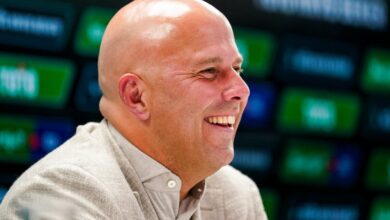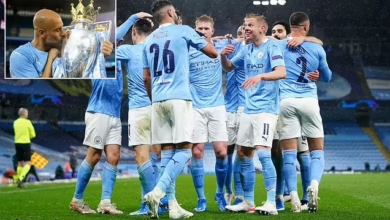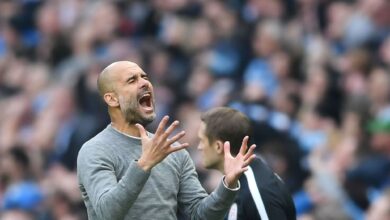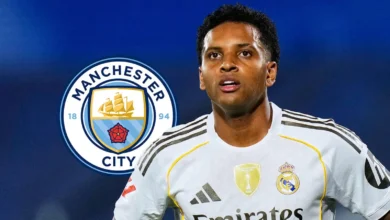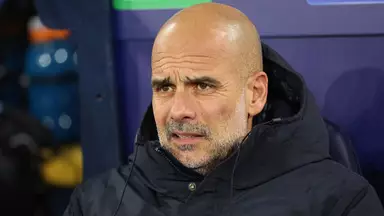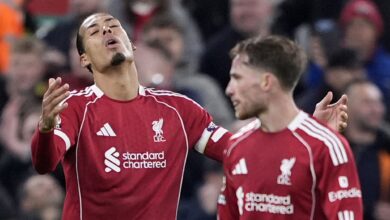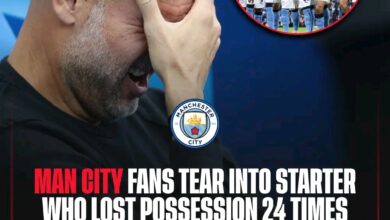Liverpool News: Liverpool signed best young player in the world in club record deal

there was a time when liverpool were chasing dreams that felt impossible to catch, when every young player with a spark of talent was called the next gerrard, the next owen, the next carragher. the club’s academy was once described as a gold mine, but in truth, the shine often faded before the glory came. in the early 2000s, fourfourtwo magazine released a famous list: the 100 best young players in the world. hidden inside that list were names that were supposed to change football forever. some did. many didn’t. and liverpool had their fair share of both.
back then, the world believed liverpool had found the next world beaters. people spoke with excitement, the same way they speak now about young stars like trent alexander-arnold or conor bradley. but history was cruel. the early 2000s were strange years for the reds. the academy was struggling to produce stars who could carry the torch once held by gerrard or owen. for a club that gave birth to legends, the drought of talent felt like a curse. but there was still hope, because lists like that from fourfourtwo gave people something to dream about. they believed the next big thing might already be wearing red.
it’s funny how time exposes football’s biggest lies. when you look back at that list, you see that kaka, the same kaka who would go on to win the ballon d’or and lift both the world cup and champions league, was ranked only 95th. imagine that. the same magazine that placed kaka near the bottom gave higher positions to players whose names are now forgotten. names like david prutton and daniyel cimen, who were once hyped like future kings but vanished without leaving a mark. it shows how unpredictable football really is. the game does not reward hype—it rewards survival.
then came the first future liverpool player on the list—ramon calliste. he was a young forward from manchester united’s academy, full of pace and confidence, someone who believed he was destined for greatness. in 2005, he joined liverpool and became the top scorer for the reserves. but football can be cruel in a single moment. one bad tackle in pre-season, one broken ankle, and everything changes. calliste never recovered from that injury. instead of the bright lights of anfield, he found himself walking away from the game before he had even begun. a career that once looked golden ended in silence.
as you go down that list, the names start to bring back memories of a generation that dreamed big. there was dimitar berbatov, smooth and stylish, who would later shine in england. michael essien, powerful and unstoppable in his prime. and then there was cherno samba, the football manager legend, whose name became more famous on a computer screen than on any pitch. samba was supposed to join liverpool. the club even made a £1.5 million offer to sign him from millwall. the deal collapsed, and that was the start of his downfall. without that move, his confidence broke, and he never recovered. it’s strange to think how one transfer could have changed a man’s destiny.
another name jumps out—matteo brighi, the italian midfielder once rated 97 on fifa 2003. imagine that. better than messi. better than cristiano ronaldo. even ronaldo from brazil, who had just won the world cup, was rated lower that year. brighi was supposed to be a legend. instead, injuries and inconsistency dragged him into football’s forgotten corners. there’s a cruel poetry to it—the higher the expectation, the harder the fall. that was the reality for many young stars of that time.
then the list reached number 38. chris kirkland. liverpool’s young goalkeeper who was once called the future of england. he joined the reds from coventry city for £6 million, becoming the most expensive british goalkeeper in history at just 20. fans believed they had found the next ray clemence. for a while, kirkland looked like that future. he replaced jerzy dudek and was number one under rafa benitez. but then came the injuries—shoulder, back, knee—one after another. he missed the champions league final in 2005, the same one liverpool won in istanbul. by the time his body gave up, his spirit was almost gone too. depression hit him hard after retirement, but he fought back. today, kirkland works with the lfc foundation, helping others who have faced their own darkness. his story is not of failure—it’s of survival.
gregory vignal also made the list, a young french defender with big dreams. he had joined liverpool in 2000 and started brightly, strong and confident on the ball. but like many before him, injury struck. a fractured foot ended his season, and by the time he recovered, his place was gone. he became one of those players who drifted through loan spells, never finding a real home until the game slowly forgot his name.
there was milan baros too—fast, fearless, and for a brief moment, unstoppable. he joined from banik ostrava for £3.2 million and exploded onto the scene. he was liverpool’s top scorer in the champions league-winning season of 2004-05. he even won the golden boot at euro 2004 for the czech republic. yet somehow, he never became the star people expected. benitez didn’t see him as part of the future, and soon he was gone, sold to aston villa. another career that promised fire but ended with flickers.
john welsh was another one—the “next gerrard,” they said. strong, brave, local lad. but not everyone can become the next gerrard. welsh made only ten appearances for liverpool before being swapped to hull city. he spent most of his career in league one, far from the lights of anfield. but he played with pride. not every dream ends with trophies; some end with quiet dignity.
and then came the famous cousins—anthony le tallec and florent sinama-pongolle. in 2001, they were teenage sensations after shining at the under-17 world cup. liverpool signed them both, believing they were the future. by 2003, they finally arrived. they even helped in the 2005 champions league run, both scoring vital goals. yet they never reached the greatness predicted for them. le tallec scored only once for liverpool and spent most of his time on loan before disappearing into the lower leagues of france. pongolle did slightly better, scoring nine goals and later playing for atletico madrid, but his story too faded with time. the fire that burned at seventeen went out quietly by thirty.
among those names were also giants like iniesta, who ranked only twentieth but became a legend, showing that lists mean nothing. he would go on to define spanish football. higher up, jermaine pennant appeared at number five. a troubled genius, signed by liverpool from birmingham city for £6.7 million in 2006, just a year after serving time in prison. pennant started strong, dazzling fans with his pace and skill. he was man of the match in the 2007 champions league final even though liverpool lost to milan. but his fire faded too. arguments with benitez and bad choices outside football ended his anfield journey. after that, his career became a list of short spells across england, spain, india, singapore, even non-league football. he was a man who had talent but could never control the chaos around him.
then there was fernando torres—number four on the list and truly the one who justified the hype. he arrived at liverpool in 2007 for £20 million and became the club’s record signing. for three glorious years, torres was a storm in red. he scored 81 goals in 142 games, destroying defenders with his speed and precision. every goal at anfield felt electric. fans called him el niño, the boy who made them dream again. but injuries came, and when he left for chelsea in 2011 for £50 million, hearts broke. torres never found the same joy again. he won trophies at chelsea, yes, but the magic was gone. still, he remains one of the most loved players in liverpool history, a reminder of what brilliance looks like even when it doesn’t last forever.
the man ranked number one on that 2001 list was djibril cisse. at that time, he was a monster of a striker at auxerre, all power and flair. liverpool signed him in 2004 for a club-record £14 million under gerard houllier. cisse arrived with swagger and hope. but fate struck again. in october 2004, he suffered a horrific broken leg against blackburn. it was the kind of injury that makes stadiums go silent. doctors feared he might never walk again. somehow, he came back. he even scored in the 2005 champions league final penalty shoot-out and again in the 2006 fa cup final. but his relationship with benitez never worked. he was sold to marseille in 2006, ending a short, wild, unforgettable chapter.
after liverpool, cisse’s life was a rollercoaster—goals, tattoos, fashion lines, and another broken leg. he played in greece, italy, england again, russia, switzerland, france, japan. he chased one last dream—to score four more goals and reach 100 in ligue 1—but that call never came. still, cisse’s story remains special. he may not have become the world’s best player, but he became unforgettable. and maybe that’s better.
looking back now, that list of “future legends” is like a time capsule of football dreams. so many names that once filled newspapers and excited scouts, now barely remembered. it teaches one clear truth: talent alone means nothing without luck, health, timing, and guidance. one injury, one wrong move, one bad manager, and the future can vanish.
for liverpool, those years were full of lessons. from kirkland’s broken dreams to torres’s heartbreak, from pongolle’s fade to cisse’s battles, every story carried pain and beauty. but those failures built the foundation for what came later. the modern liverpool academy, the one that gave the world trent alexander-arnold, conor bradley, curtis jones, and jarell quansah, learned from those mistakes. today, the reds’ youth system is smarter, stronger, and built to protect its players from the curse of too-early hype.
in football, the biggest enemy of young talent is expectation. when magazines call you “the next big thing,” they forget that you are still a child learning to grow. that was the trap of the early 2000s. players were judged before they even played. when they failed to become messi or ronaldo, people called them flops. but in truth, they were just humans trying to find their place in a cruel game
djibril cisse, john welsh, anthony le tallec, chris kirkland—all of them carried the same dream: to be the one who made anfield roar. some did for a short time. others never got close. but every one of them carried the hope that built the club’s soul. that is what makes football beautiful. the pain, the failure, the small victories—they all count.
today, when liverpool fans talk about the future, they talk about academy kids with calm belief. not every one of them will become legends, but each has a chance. because now the club knows how to protect them. they know that talent needs patience. that is the biggest lesson from that forgotten list of 2001.
the irony is that the only true global superstars from that list were players who ranked surprisingly low—kaka at 95, iniesta at 20, torres at 4, zlatan ibrahimovic at 35. the game doesn’t care about rankings; it rewards those who survive long enough to write their own story. and that’s what football is really about. survival, resilience, and the ability to keep going even when the world stops believing.
for liverpool, those years were not just about failed wonderkids—they were about transformation. behind every injury, every transfer gone wrong, every broken promise, there was growth. the mistakes made with cisse and kirkland helped the club handle the next generation better. the lessons learned from the hype around pongolle and le tallec helped them guide youngsters like elliott and jones more wisely. football is a circle; every failure plants a seed for success.
so when fans look back at fourfourtwo’s 2001 list and see liverpool’s name next to so many forgotten players, they should smile. because that pain shaped the club’s future. those names, even if forgotten by the world, are part of the story that led to the champions league win in 2019, to the premier league title in 2020, to the rise of the new generation. from kirkland’s broken back to trent’s perfect cross, from cisse’s scream to salah’s smile—it’s all connected.
in the end, the story of liverpool’s “best young player in the world” is not really about djibril cisse or any single man. it’s about a club learning how to fall and rise again. it’s about the beauty of believing, even when belief keeps breaking. it’s about the fans who still sing the same songs no matter who wears the shirt. and it’s about the truth that football, like life, never follows a script.
the names change, the stadium changes, the game evolves, but one thing stays the same—the dream that someone new will walk through the tunnel at anfield and make the world stop for a moment. maybe the next “best young player in the world” is already there. maybe he’s in the academy, watching old highlights of gerrard and cisse and thinking, one day, it will be me.that’s the magic of football. that’s the magic of liverpool






